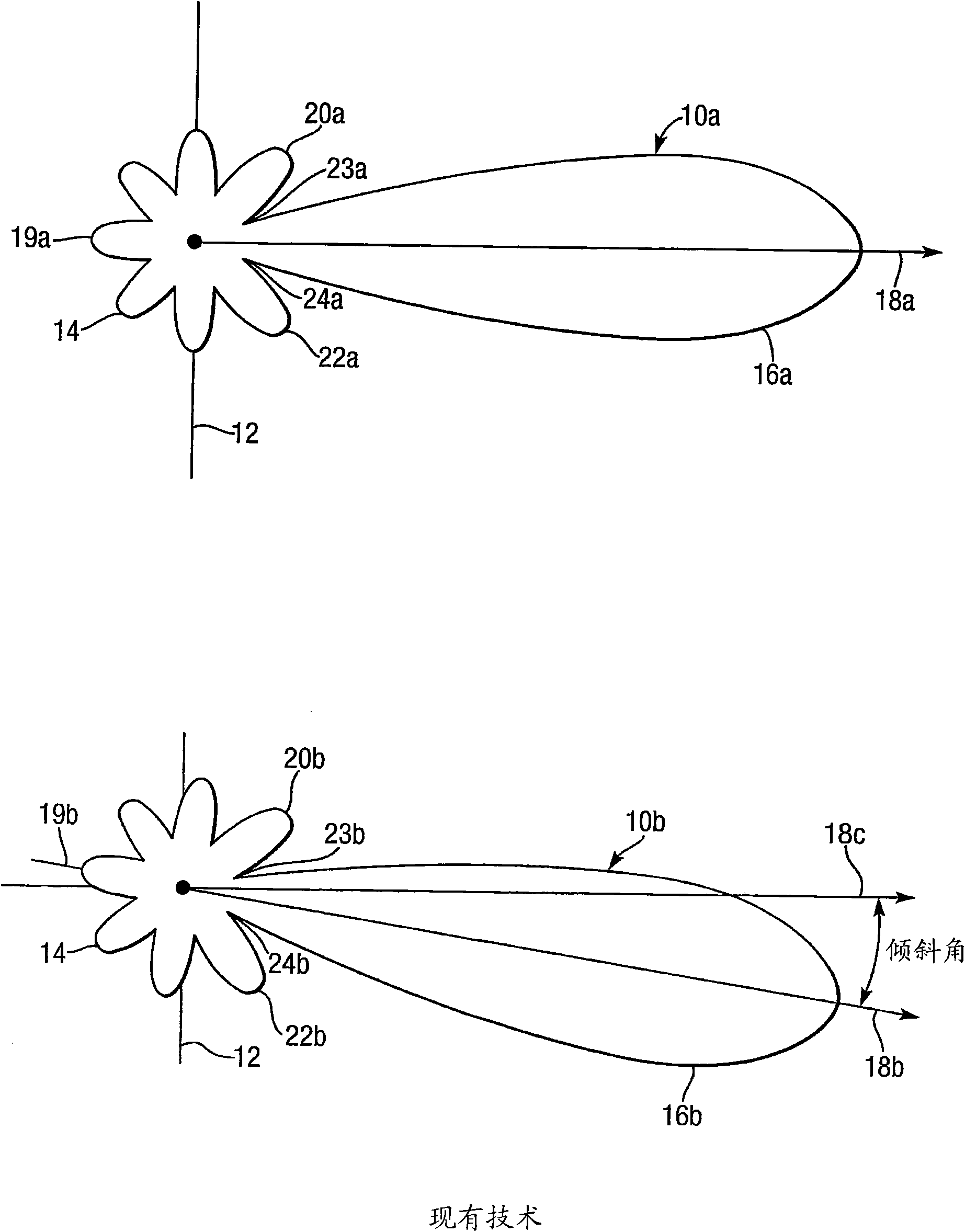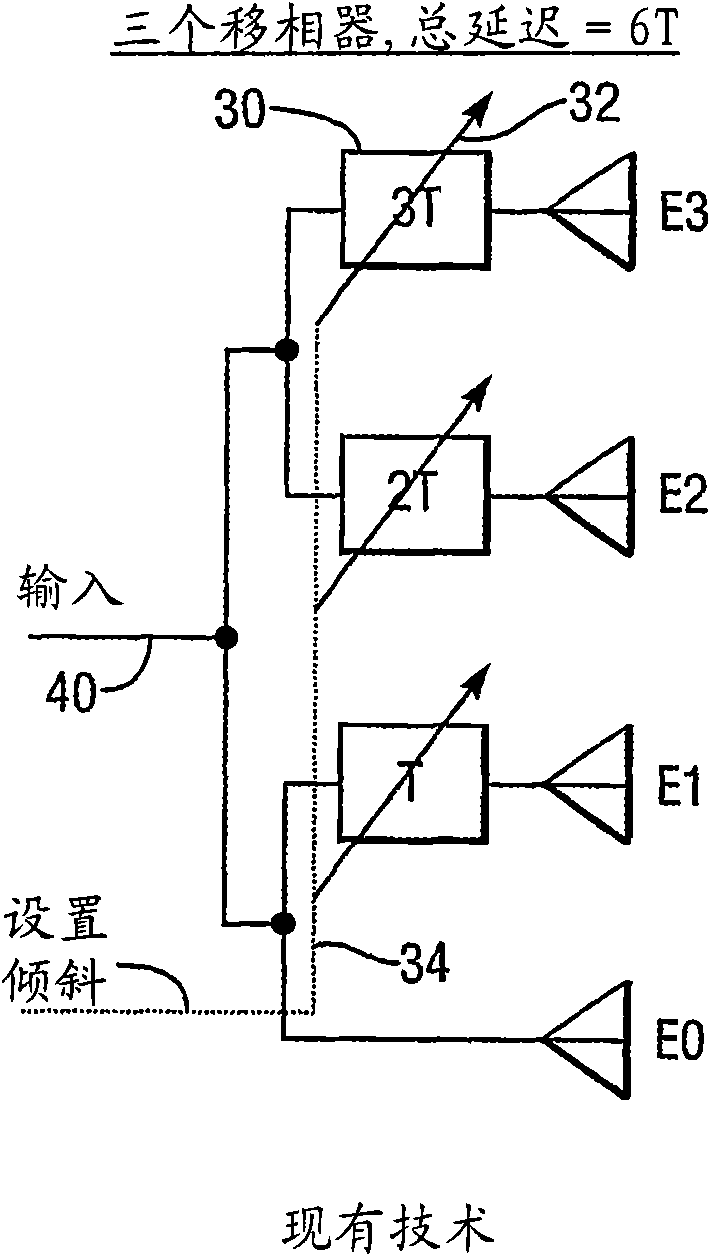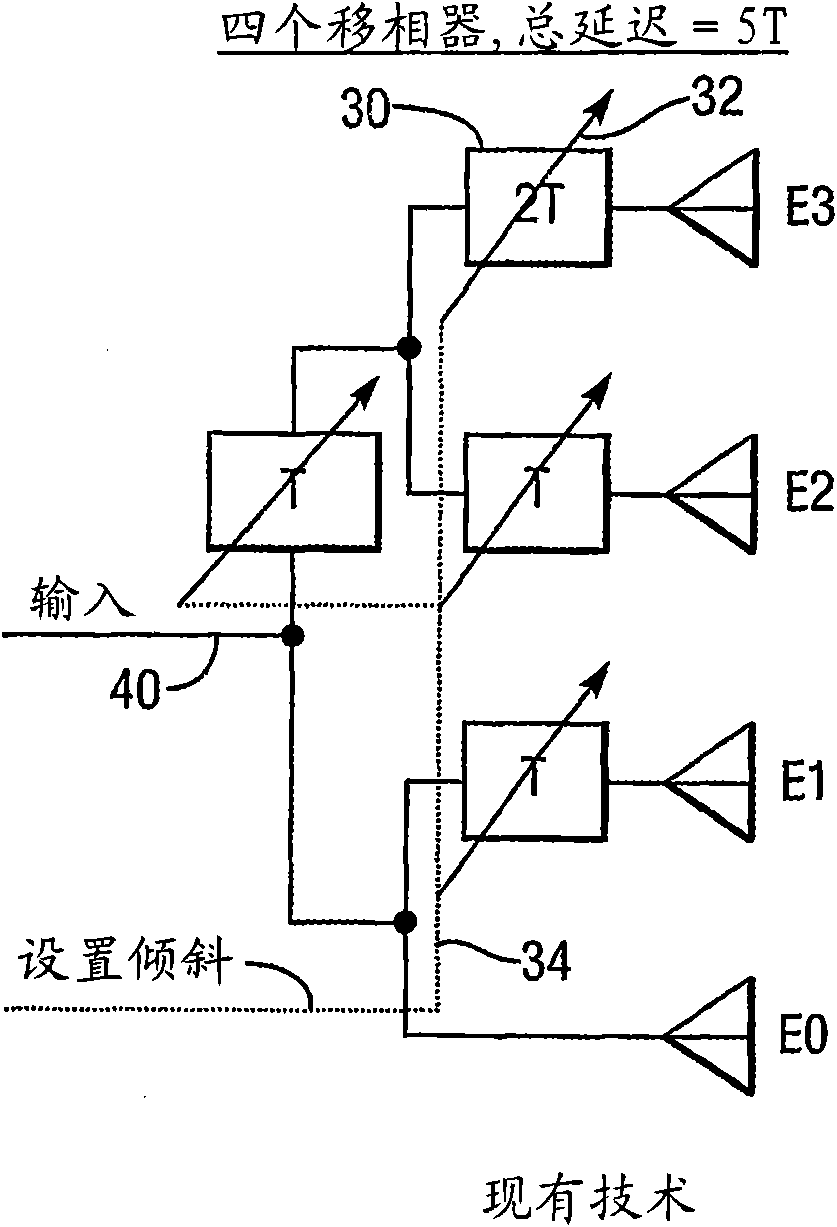Phased array antenna system with electrical tilt control
A phased array antenna, tilt control technology, applied in specific array feeding systems, individually powered antenna arrays, antennas, etc., can solve the problems of reducing antenna gain, complex phased array antennas, high cost and weight, etc.
- Summary
- Abstract
- Description
- Claims
- Application Information
AI Technical Summary
Problems solved by technology
Method used
Image
Examples
Embodiment Construction
[0065] refer to figure 1 , shows vertical radiation patterns (VRP) 10a and 10b of a phased array antenna 12 consisting of an array of antenna elements (not shown). The antenna 12 is linear, has a center 14 and is arranged vertically in the plane of the drawing. VRPs 10a and 10b correspond to zero and non-zero variation, respectively, in the delay or phase of the antenna element signal with array element distance across antenna 12 from the array edge. They have respective main lobes 16a, 16b (main lobes 16a, 16b have centerlines or "lines of sight" 18a, 18b, respectively), rear lobes 19a, 19b, first upper side lobes 20a, 20b, first lower side lobes 22a , 22b, first upper null (null) 23a, 23b and first lower null point 24a, 24b; 18c represents the boresight direction of zero change of delay compared to non-zero equivalent (null) 18b. When referenced without the suffix a or b (eg sidelobe 20), refer to either related pair of elements without distinction. VRP 10b is tilted rela...
PUM
 Login to view more
Login to view more Abstract
Description
Claims
Application Information
 Login to view more
Login to view more - R&D Engineer
- R&D Manager
- IP Professional
- Industry Leading Data Capabilities
- Powerful AI technology
- Patent DNA Extraction
Browse by: Latest US Patents, China's latest patents, Technical Efficacy Thesaurus, Application Domain, Technology Topic.
© 2024 PatSnap. All rights reserved.Legal|Privacy policy|Modern Slavery Act Transparency Statement|Sitemap



